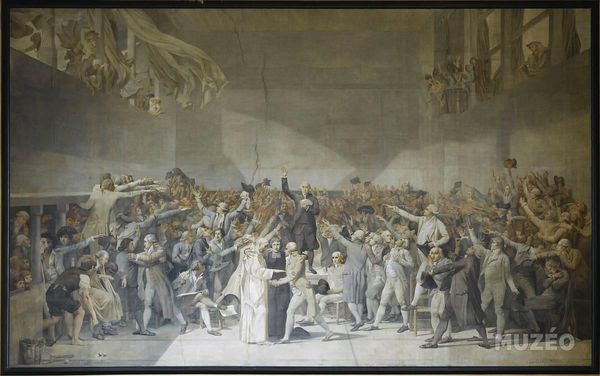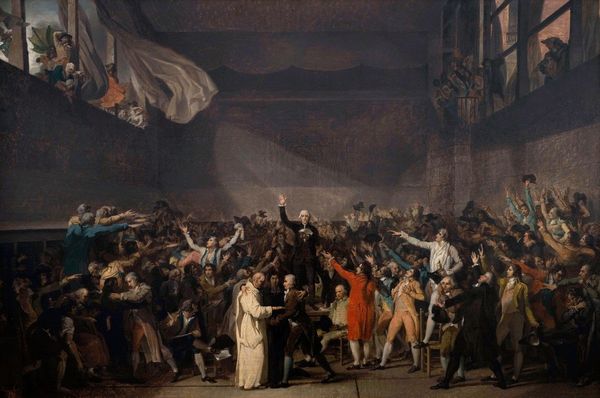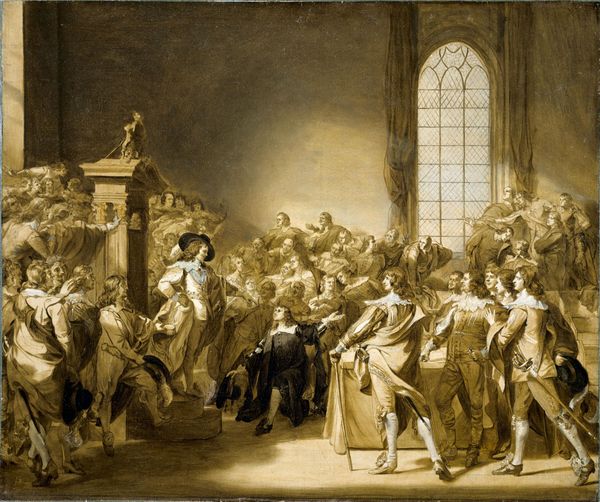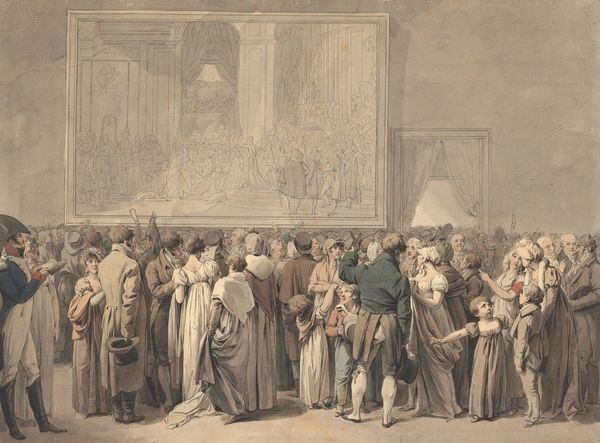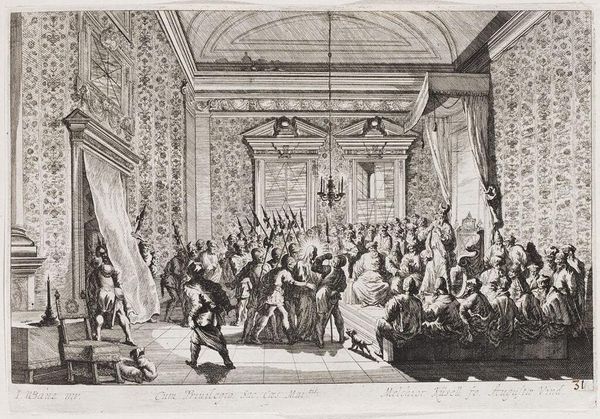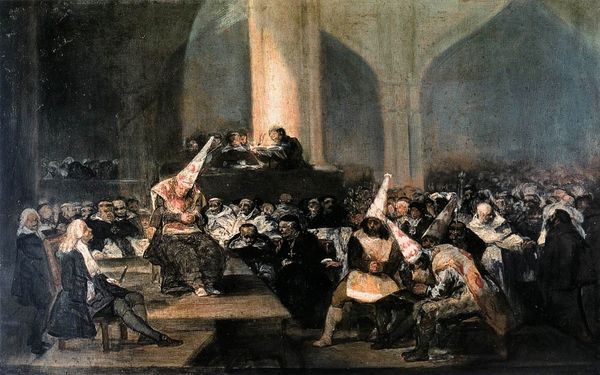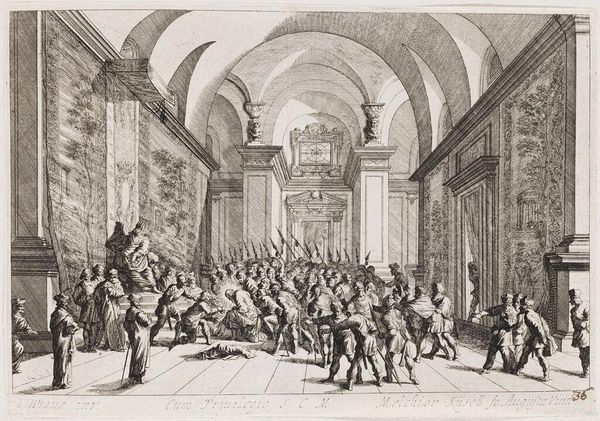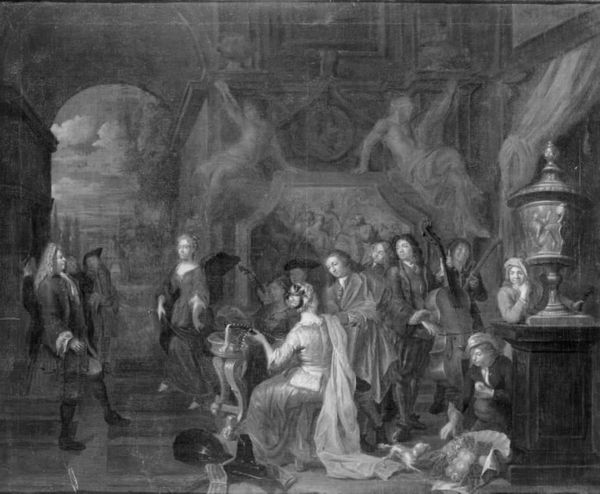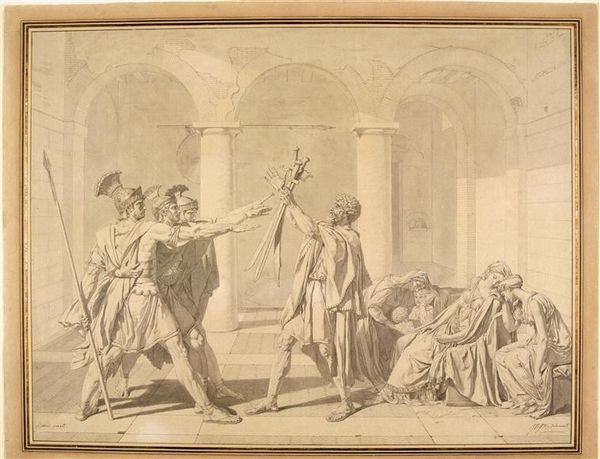
The Tennis Court Oath, 20th June 1789 1791
0:00
0:00
jacqueslouisdavid
Château de Versailles, Versailles, France
drawing, pencil, pen
#
drawing
#
neoclacissism
#
narrative-art
#
oil painting
#
group-portraits
#
pencil
#
pen
#
history-painting
#
academic-art
#
mixed media
Dimensions: 66 x 101.2 cm
Copyright: Public domain
Curator: Look at this compelling drawing; it’s Jacques Louis David’s depiction of "The Tennis Court Oath, 20th June 1789," created in 1791. Editor: It's an absolute surge of bodies, isn't it? Like a single organism expressing some deeply felt emotion, all limbs and strained necks reaching upward. There’s something powerful about this wave of humanity. Curator: David really captures that revolutionary fervor, doesn't he? He made this preparatory drawing for a large, never-fully-realized painting intended to commemorate a pivotal moment during the early days of the French Revolution, now residing at the Château de Versailles. Editor: That reaching, for me, feels significant. It's as if they're not just reaching toward some abstract ideal, but attempting to grasp something vital, a connection to something greater, beyond the confines of the tennis court itself. Curator: Absolutely. You see the power in representing collective will. It’s a clever depiction of political unity and purpose, but I find that its real impact came later. The image, in many respects, shaped the future interpretations of the revolution by making this singular event so monumental and formative. Editor: Speaking of formative, those wind-whipped drapes and angelic figures up top, though, create a strong sense of destiny at play. There's this feeling of higher powers aligned with the people's will. Are we meant to see that divine right being transferred from the King to the general populace? Curator: That's a complex question. We see David using neoclassicism here to associate these revolutionary figures with republican virtue and stability, contrasting them with what he, and others, viewed as the decadence of the old regime. This would be quite an efficient strategy, if one aims at promoting republicanism as the natural inheritor of that ‘divine right’. Editor: So it is interesting to see how symbols were strategically used to re-imagine the source of sovereignty in France. After this discussion, I really grasp how David elevated this historical moment. Curator: Indeed, I’m struck once more by how history and symbolism combined here in the hands of a master, create not only an image but also a narrative for generations.
Comments
No comments
Be the first to comment and join the conversation on the ultimate creative platform.
